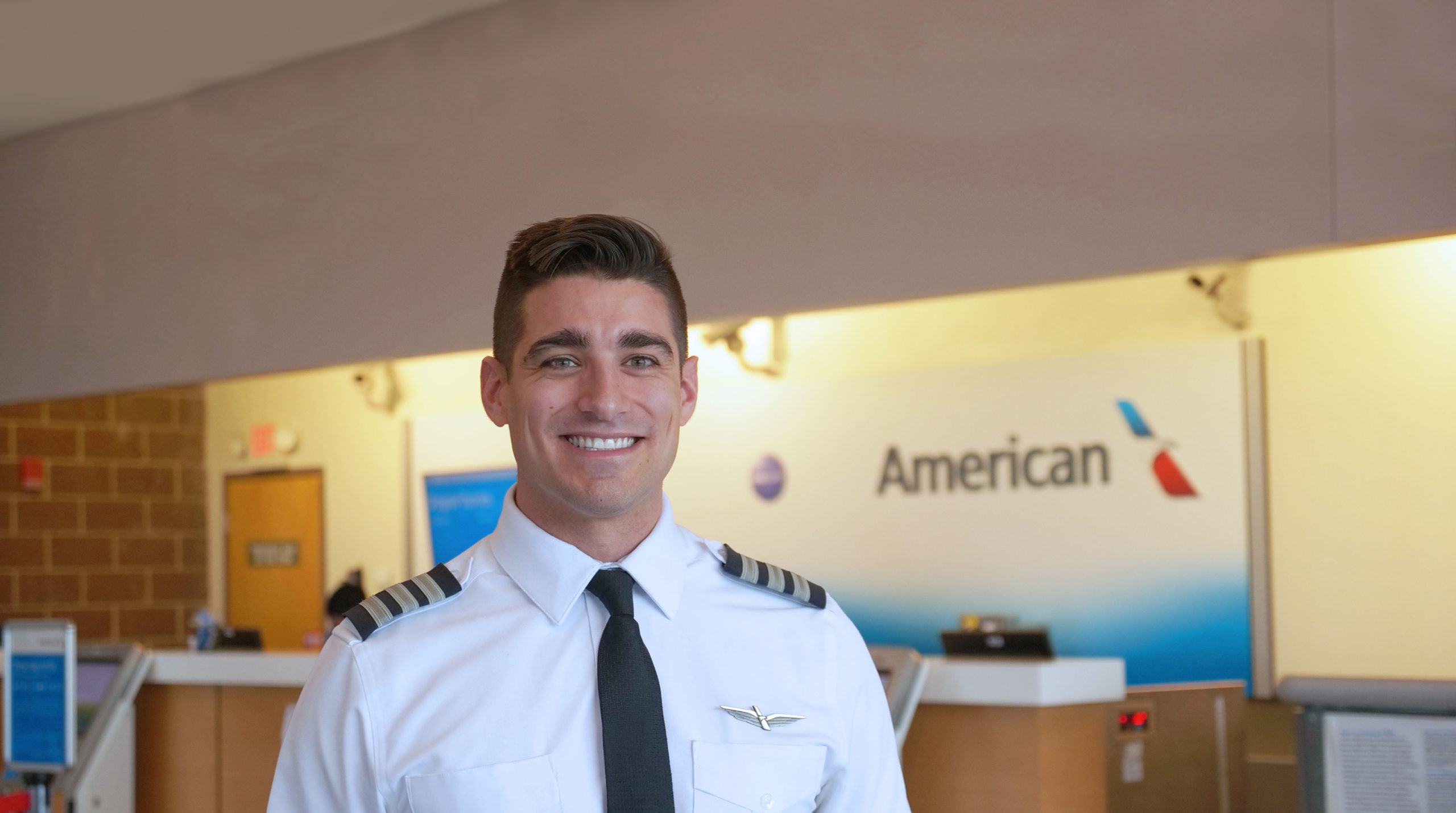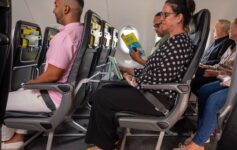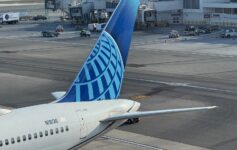
This is the second in a three-part series that talks about flying airliners and some of the challenges this pilot sees for the profession. If you read part one of this series, you will hopefully recall how I discussed the sacred trust inherent in being an airline pilot. It is in executing that sacred trust that I think we as a profession can and must do better. Certainly, stories like US Air 1549 and their landing on the Hudson are awesome examples of professional pilots at their best. But we have a litany of accidents that reveal problems in the industry that require systemic change to address.
The Problems Pilots Face Today
Less Military Background
Let’s start with where new pilots are coming from. The days when the majority of airline pilots had military flying backgrounds are long over. That’s not to say that pilots from civilian backgrounds are by default in any way inferior. But the quality of their initial training is far less assured. Add in the fact that the training fleet more and more is populated by aircraft with glass cockpits and the seeds of automation dependency get sown early.
In Europe and other parts of the world, we now have airline pilots being created through MPL (multi pilot license) programs where the whole of their experience is in a multi pilot environment. That has some benefits but it can also mean that those pilots never really learn to think for themselves which is a necessity in a single pilot environment. The law of primacy says that what you learn first is what you learn best. Thus, it’s simply vital that pilots from the beginning are taught airmanship. The accelerated nature of some of these programs can also lead to pilots with very few hours in the cockpit of an airliner. This means that their base of experience on which to draw when things go wrong is very limited. Almost everything that is happening to these new pilots is happening for the first time, which is far from ideal in an airliner.
More Automation
Next let’s talk automation. Today’s airplanes are both highly automated and highly complex. They are also extremely reliable. This creates challenges on several levels. First, it’s very easy to engage the autopilot and autothrust shortly after takeoff and only disengage it just before landing. This can create pilots who lose their ability to hand fly the aircraft without that automation engaged which is obviously not a good thing. Secondly, the reliability of the various systems means that significant failures are a very rare occurrence. This easily leads to complacency because day after day everything works exactly as its supposed to. The complexity of these systems can also lead to issues. Autopilots don’t always do what you’d like them to do and some of them have traps built in waiting to snare the unwary. Highly automated computer-controlled airplanes can create challenges. A fault in one system can create failures in others that seem totally unrelated because they are connected in ways that aren’t obvious or even addressed by the manuals. The problems with MCAS in the 737 MAX are a perfect example of this.
Recurring Training Shortfalls
Training presents another issue. At far too many airlines the training scenarios are canned and well-known by the pilots. They complete the same evolutions the same way year after year after year. Too many airlines simply view training as a cost that they want to minimize no matter what. Annual training should be both an opportunity to hone and refine skills and a chance for an evaluator to check those skills. But when you have a canned and memorized script and a training department that cares only about being cheap none of those things are happening.
Key Incidents
In the last few years, we’ve had multiple incidents that have highlighted these problems. In some cases, the accidents have become turning points that have led to fundamental change but not in all cases.
Air France 447
One example that’s both good and bad is Air France 447. This was the Air France A330 that crashed when its pitot tubes iced over during a flight across the Atlantic from Brazil to France. The pilot flying who had just been discussing the fact that the aircraft was at the top of its operational envelope reacted to the loss of airspeed, not by following the proper checklist, but instead he grabbed the side stick pulled it full aft and held it there stalling the aircraft. It’s the sort of thing a properly trained professional pilot should never have done.
The good news is that, at least in the US, AF447 proved to be a watershed accident. The FAA moved fairly quickly to push airlines to address issues of automation dependency by requiring significantly more hand flying during check rides. They further mandated that simulators be modified to accurately reflect the post stall behavior of the aircraft and mandated solid training in recognition and recovery from unusual attitudes. Today as a result of AF447, hand flying the airplane with all the automation turned off and practice recovering from multiple unusual attitudes are a normal part of our recurrent syllabus. But what is unbelievable to me is that in Europe and other parts of the world AF447 seemed to change nothing.
Boeing 737 MAX
The Lion Air and Ethiopian MAX crashes should also serve as a wake-up call to develop airmanship skills. Both crews faced technical faults (In the case of Lion Air a long list of such faults) but both incidents were survivable. Unfortunately, both crews committed serious errors in basic flying skills that led to the loss of their aircraft.
Atlas Air 3591
Atlas Air 3591 should become another turning point accident. The First Officer who was flying it turned out had a long history of training failures and being fired from different airlines. Unfortunately, not everyone can or should be in the cockpit of an airliner. This pilot had a history of problems that demonstrated his fundamental unsuitability to be an airline pilot. A proper training program should have been able to identify his lack of proficiency and prevent him from reaching the cockpit.
Others
PIA flight 8303, Miami Air 293, PenAir 3296, Aeroflot 1492, the list of accidents and incidents that are directly attributable to pilot error in the last few years goes on and on. Flying on an airliner is the safest form of transportation known to man but it can, should, and must be made even safer.
We’ve Come A Long Way…
In my grandfather’s era in aviation a lot of accidents were the result of equipment failures. I remember him telling me once that the only time as an airline pilot he thought he wasn’t going to make it was overwater in a Lockheed Constellation with a runway prop that he expected to come off and tear through the airplane at any moment. His logbooks in those days of flying piston engine airliners are filled with engine failure after engine failure. That in over 20 years of airline flying I’ve never had a serious mechanical failure is a great testament to all the work that’s been done to make commercial flying safer.
CONCLUSION
What hasn’t changed for the better in many cases is how we create airline pilots and how we train them. If we are going to make flying safer that will have to change. And it’s what I’m going to talk about in part three.
image: Piedmont Airlines




Wow. Thanks for the no-BS assessment of recent air disasters, especially the MAX incidents. There are still people who diminish the role the pilots played (not to mention mechanical inspection/log failures) in how those incidents played out. Not to absolve Boeing or Airbus, but there’s plenty of blame to assess. Would a US=trained pilot have reacted differently…perhaps averting disaster? I hope so.
I was told in the comments today on another article of Matthew’s that Downfall, the Netflix Boeing documentary on these crashes was biased and incorrect. Now this article also mentions pilot error. Is there any reading or documentary anyone would recommend on the pilot issues as I was led to believe the issue was MCAS.
Thanks, this is interesting. In a time of ‘auto land’ there are some points to ponder.
Back in the day, most commercial pilots were recruited from the military. Flights from DCA depart with about a 90 second buffer. Freakishly close. So in a 727-200 QC we were heading up the Potomac and had an equivalent of a backfire because we sucked the exhaust of another jet. Pilot announces with, no problem, I can fly on the 2 remaining engines. No need to return, no fuss & complete confidence. Obviously successful. Yes autopilot is great but no replacement for experience. But also planes used those same exhaust plumes to “de-ice”. Which lead to the air Florida crash on the 14th St bridge. Thank you to every well trained pilot!
I haven’t seen the Netflix documentary so I can’t comment on that.
What I will say is that if you look at the timeline of both accidents you see a litany of serious pilot errors. In the Lion Air crash the problems begin almost immediately with unreliable airspeed and altitude indications. The Captain calls for one of those checklists but it never gets executed. When the crew finally retracts the flaps that’s when MCAS starts trying to push the nose down. MCAS does this by means of trimming the aircraft nose down. Trim runaway is something every airline pilot should be able to recognize and quickly cope with and it’s a memory item (ie the response must be memorized so that it can be performed immediately) on the 737. To the end the crew never attempts to shut the trim system off.
In the Ethiopian MAX crash you have a crew that had completed training on MCAS and should have been aware of how it worked and what to do about it. Thus when the Captains stick shaker went off after takeoff the crew should have been aware that MCAS was highly likely to activate when they retracted the flaps. But they aren’t ready and when MCAS activates it catches them by surprise. They remain at takeoff power as the nose gets pushed down and their airspeed increases quickly dramatically adding to the difficulty of dealing with the fault. Until finally they exceed redline airspeed and the aerodynamic loads on the elevator exceed the power of the hydraulics to hold it up which becomes the final nail in the coffin leading to the crash.
As should be apparent both crews made numerous and inexcusable for professional pilots errors in how they handled these events. If either crew applies their training and good airmanship skills then neither accident happens.
Thank you for the reply and information. Appreciate it. Also it would be cool if you could watch the documentary at some point and then write a reaction blog post on here for it
I appreciate a revisit to the Lion Air 610 crash after all the investigations have completed and we now have the grace of hindsight. I have this question: Wasn’t the MCAS training itself by Boeing largely at fault for the poor understanding the pilots had about the issue? Boeing was accused of playing down the significance of the MCAS system to regulators and airlines to compete with Airbus and I read this was reflected in the training being sparse.
This is probably the most nauseating load of garbage I’ve read on this site, and that includes Kyle’s articles every Sunday.
Joseph,
Not exactly sure what specifically you are referring to. If it is 121s posts, do you have and educational or experiences that qualify you to comment? I think they are accurate and well thought out.
If you are commenting on a specific response, highlight it, otherwise you don’t need to comment.
FYI. I have attended two accident investigation courses, hold a commercial pilot’s license and hold some basic qualifications.
One point mentioned is automation bias. This is a real issue for the current generations. They tend to believe the computer rather than using their eyes, ears and brain to evaluate alternatives. Similar to thinking the first thing they see in a Google query is correct.
Shouldn’t there be a database to prevent stuff like the mentioned Atlas Air crash? After all, doctors are subject to a national database in the U.S. to prevent them from moving to another state to start from scratch.
Should pilots, being professionals, be banned from unions? Doctors are banned from unionizing. They cannot unionize to negotiate with Medicare or United Healthcare. (Or maybe allow doctors to unionize?)
There is records reporting on pilots but that’s an imperfect system.
What should be in place is a training program that can identify serious deficiencies like those the first officer had and prevent him from reaching the cockpit.
And no I don’t think eliminating unions would improve the safety picture. In fact I expect exactly the opposite would occur.
Hi 121pilot you are a handsome.
You’re making me scared to fly for an upcoming Xmas flight!!
I’ll be praying my novena for those on the flight deck!!
Such an irresponsible piece with no sources cited to back up claims. Irregular scenarios and how to handle them is at the core of our training. While not at liberty to give specifics, the major I work has invested heavily in ensuring responsible automation usage while knowing how to handle irregular scenarios. Has training changed – yes. Everything evolves. Some for the good and some for the bad. We still have a high blend of military and civilian background. Both offer the own strengths and weaknesses. I’m appalled to see something like this as it is a slap in the face to the thousands of professional pilots who diligently work to ensure every flight they operate is upheld in the safest manner possible
Interesting take on the military vs civilian training. Does this apply to paths like banner-towing, photography, etc.? Seems like CFI would be a great way to reinforce the plane, although you’re not piloting but you’re still actively going through the “concepts”.
I would argue Miami Air 293 “directly attributable to pilot error” as misleading, Reading the NTSB report shows the main issue was the absence of runway groves. Something that the Navy has no interest in changing at the moment btw, The NTSB also concluded “the aircraft would still have been unable to stop under the prevailing conditions”.
Interesting article indeed
could you write me name of this pilot
who is who the photo above